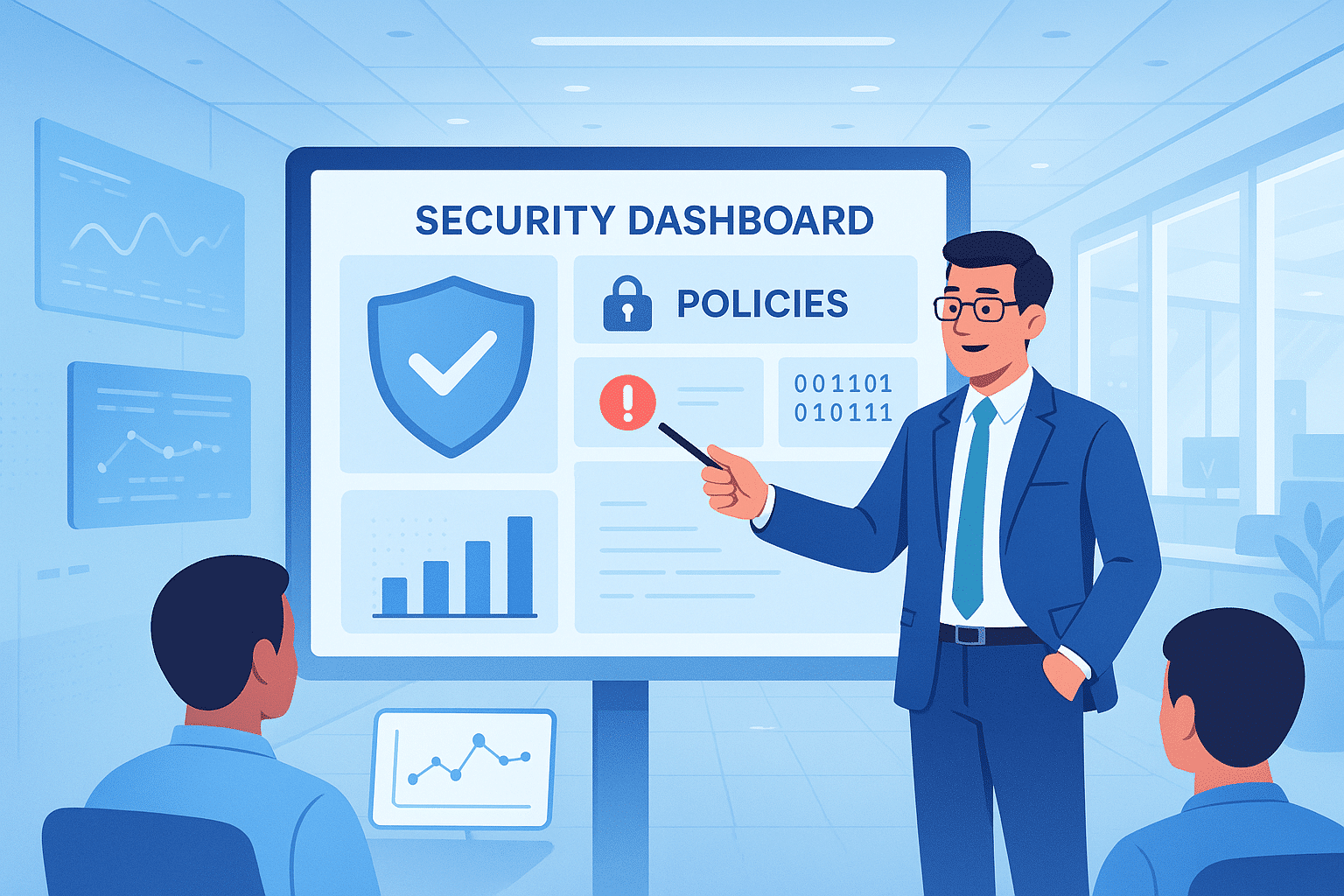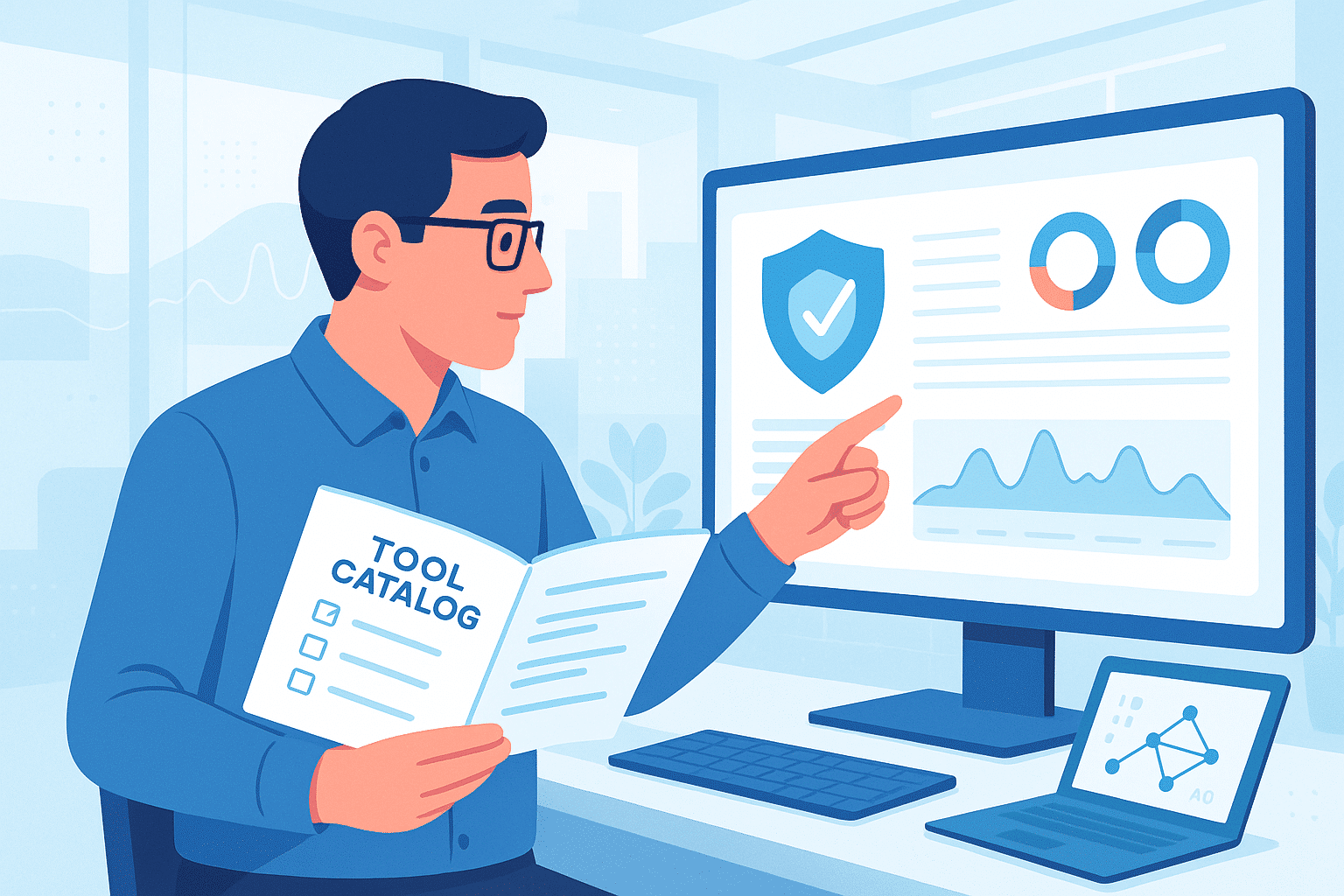Shadow IT, or ghost IT, stealthily infiltrates companies without full awareness. Unauthorized tools, off-radar usage, exposed data… this rapidly growing phenomenon can compromise your cybersecurity if not addressed. Discover its risks, causes, occasional benefits, and how to tackle it effectively.
What is Shadow IT?
Definition of Shadow IT
When you utilize an application or digital tool without your IT department’s approval, you engage in what’s known as Shadow IT. In French, it’s also called ghost IT. This could involve a cloud service, a messaging application, a collaborative tool, or even simple software downloaded without internal validation.
These practices are often adopted for convenience: to bypass systems perceived as too slow or restrictive. However, they evade all control, creating invisible vulnerabilities in your company’s infrastructure. It is thus essential to understand their mechanisms to act effectively.
Shadow IT vs Shadowing: What's the Difference?
These two concepts can cause confusion, but they represent very distinct realities. This table provides a clear comparison:
| Concept | Definition | Main Objective |
|---|---|---|
| Shadow IT | Use of technology without IT department approval | Improve efficiency or bypass internal constraints |
| Shadowing | Discreet observation of a task or IT-related role | Train, supervise, or analyze actual usage |
If you’ve mixed up these two concepts, you’re not alone. But now, you know one is often risky while the other is generally valuable for learning or audit purposes.

Why is it Referred to as Ghost IT?
The term ghost IT isn’t an exaggeration. It covers all those technologies that operate in the shadows, outside official oversight. Like forgotten software on a workstation or a messaging app used without authorization, they might seem harmless but can undermine the entire organization.
When discussing ghost IT, the focus is on the issue of visibility: that which is unseen or unchecked evades all governance.
What are the Risks Associated with Shadow IT?
Increasing Vulnerabilities
With every unauthorized tool you use, you open an additional doorway to the outside world. It might seem trivial, but by multiplying these unchecked accesses, you compromise the overall security structure. Here’s a clear summary of this logic:
| Vulnerability Source | Associated Risk | Potential Consequence |
|---|---|---|
| Unsecured cloud applications | Data leakage | Loss of confidentiality |
| File sharing without protection | Unencrypted transmission | Theft or tampering of documents |
| Lack of updates | Exploitation of known vulnerabilities | Malicious intrusions |
How to Detect and Monitor Shadow IT in Your Company?
Implement Automatic Detection Tools
You can’t manually monitor every action of every employee. Therefore, you need solutions capable of automatically detecting unauthorized uses such as IDS. Specialized tools are available to analyze network traffic, detect active cloud services, or alert you of suspicious usage.
Here’s how these tools help you practically:
| Tool Function | Benefit | Tool Examples |
|---|---|---|
| Web traffic scanning | Identify services used without approval | Zscaler, Netskope |
| API analysis | Detect connections to external services | Cisco Umbrella |
| Real-time alerts | Immediate response in case of threat | Microsoft Defender for Cloud Apps |
By equipping yourself with these tools, you regain control without restricting your teams. It’s a decisive step towards a more enlightened, balanced, and proactive cybersecurity stance.

What Strategies to Effectively Combat Shadow IT?
Centralize Approved Tools
To reduce Shadow IT, start by offering credible and validated alternatives. If your employees resort to other solutions, it’s often because they can’t find what they need within the official environment.
Provide them with a clear catalog of authorized tools, updated regularly. Opt for modern, user-friendly, and well-integrated SaaS solutions to meet real business needs. Imposing unsuitable tools indirectly encourages circumvention.
The more accessible, efficient, and user-friendly your tools are, the less your teams will feel the need to operate in the shadows.
Enforce Data Governance
No anti-Shadow IT strategy can succeed without strong data governance. This means defining who has access to what, in what context, and with what rights. This clarity protects both your information system and your employees.
Establish rules for managing and circulating data within the company. This includes validation processes for adopting new tools and regular checks on the flow of sensitive information.
Well-structured governance allows you to prevent rather than suffer: you anticipate usage instead of managing incidents reactively.
Incorporate Shadow IT into Cybersecurity Policy
Rather than viewing Shadow IT as a mere deviation, consider it an integrated threat within your cybersecurity policy. Today, ignoring this practice is akin to leaving an open breach in your defenses.
Your security strategy should include:
- Continuous detection processes for Shadow IT,
- Clear remediation rules,
- and most importantly, a continuous awareness policy.
Involve your teams in this process by explaining risks and challenges to create a shared cybersecurity culture, rather than one that is imposed. A company where everyone feels responsible for security is better protected and more resilient.

Conclusion
Shadow IT is no longer a marginal phenomenon: it permeates all areas, driven by agile yet unsupervised usage. Ignoring these practices as a company weakens your security, often without you even realizing it. By understanding the issues, implementing appropriate tools, and educating your teams, you turn an invisible risk into a lever for continuous improvement.










